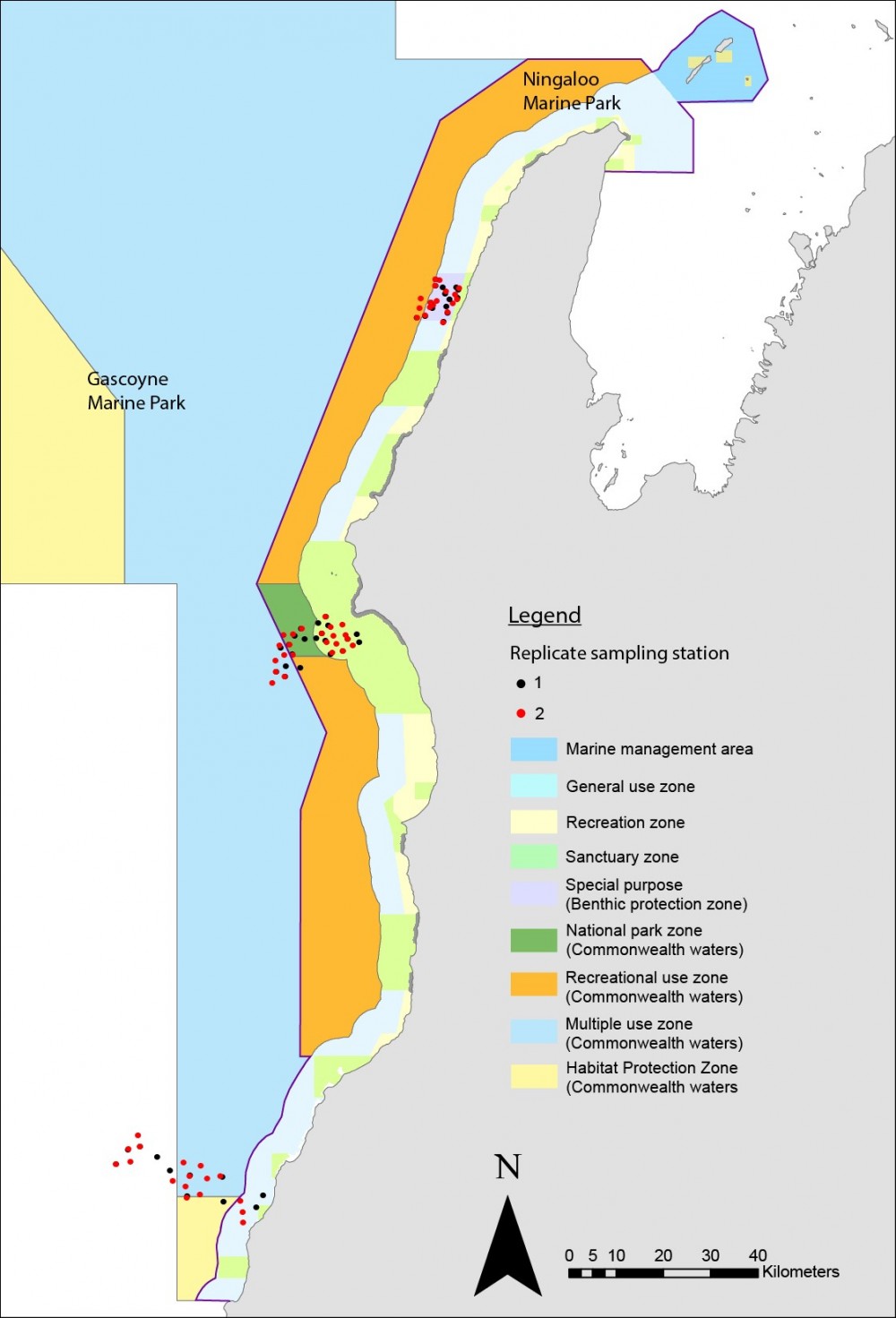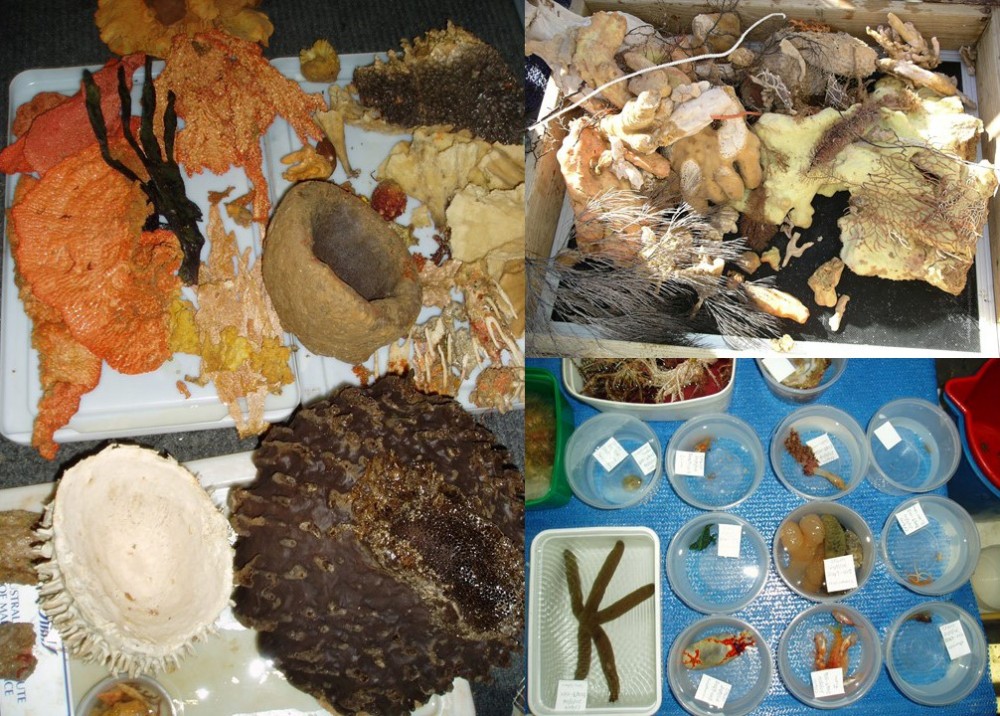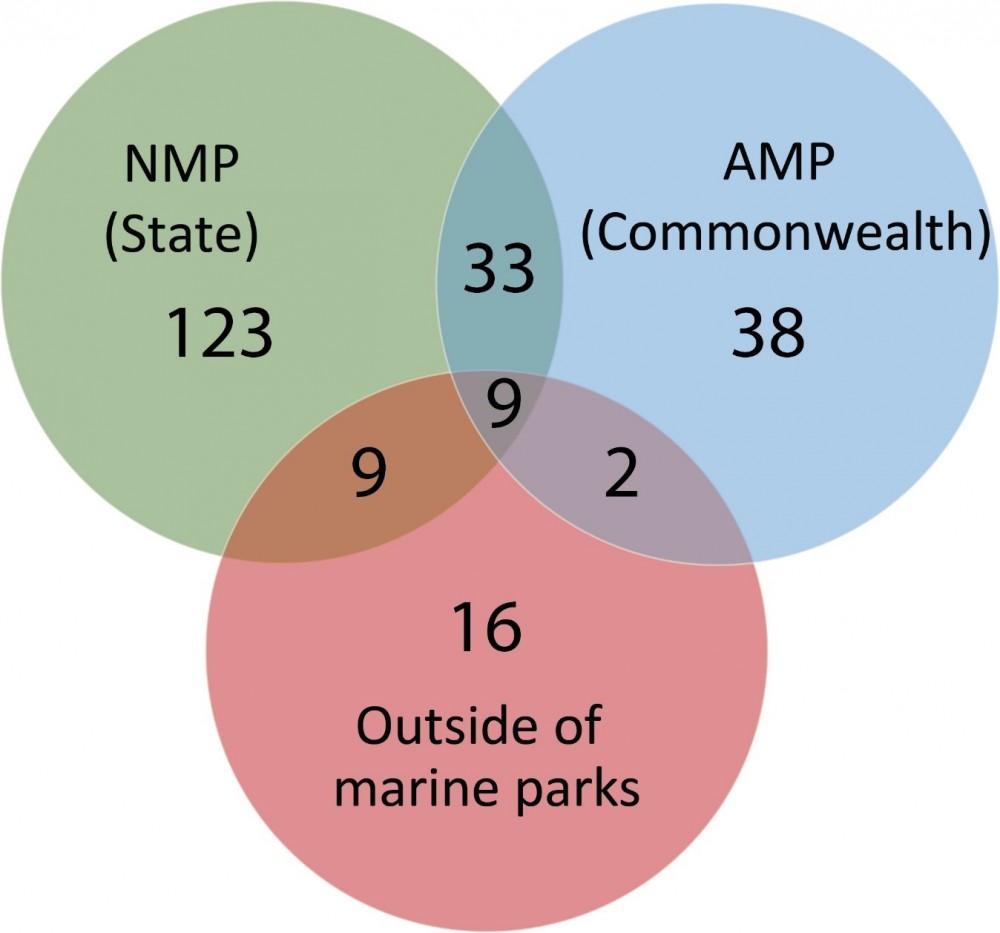Where
Ningaloo Marine Park (Commonwealth waters) and the adjacent Ningaloo Marine Park (State waters)
Who
Australian Institute of Marine Science (AIMS), Geoscience Australia (GA) and the Western Australian Museum (WAM), funded by the Commonwealth Environmental Research Facilities (CERF) Program 2007-2010.
When
Samples were collected in 2008 (CERF funded) and the archived collection was identified in 2018 (National Environmental Science Program, NESP funded).
Why
The marine environment along the Ningaloo Coast is internationally recognised for its biodiversity and ecological importance. However, while the shallow coral reefs are relatively well studied, very little is known about the deeper environment. Here, the seafloor is known to be highly variable featuring deep reefs, a steep shelf slope, crevices and canyons.
Typically, seafloor diversity is a strong indicator of species diversity, suggesting that Ningaloo’s deeper waters also support incredible marine life. It’s also likely that Ningaloo’s offshore environment influences inshore habitats and species via physical and biological processes such as currents and larval flows. As a result, effective management of Ningaloo Reef requires a thorough understanding of all components of the system.
How
In 2008, the RV Solander completed a 34-day research voyage to sample habitats and benthos along the Ningaloo Coast. Using a stratified design, the research teams used a range of methodologies including multibeam sonar bathymetry, sediment grabs, benthic samples and towed underwater video and stills photography to gather physical and biological data.
The biological samples were taken using a Sherman sled: in total, 220 samples were collected from 132 sites at depths between 30 to 123 metres. Thirty-eight sites were within the offshore Ningaloo Marine Park (Commonwealth waters) (Figure 1). The sled is towed across the seafloor for a pre-determined length of time, capturing sessile and sedentary benthic and bentho-pelagic fauna. Samples were sorted and preserved on-board following standardised museum protocols, and deposited in the WAM collections.
These samples stayed in the collection for nearly a decade, before a team from AIMS undertook a thorough taxonomic analysis. Deep-sea research is expensive and some species, like sponges, are incredibly difficult to identify. This project highlights the importance of well-curated deep-sea specimens and demonstrates how research voyages can continue to provide ongoing discovery and understanding, many years after they’ve finished.

Figure 1: Map of the study area showing boundaries for the Ningaloo and Gascoyne Marine Parks and their relevant management zonations. Stratified sampling of the seabed was performed in the north, central and southern regions of the marine parks. Sponge biodiversity from replicate sampling station 1 from was published in 2011 (Schonberg and Fromont, 2011). Archived sponge biodiversity from replicate sampling station 2 was taxonomically identified in 2018; this study.
What did we learn?
During the 2008 voyage, the team mapped more than 800 km2 of seabed at high resolution and collected more than 1000 sponge samples.
The results suggest that extensive filter feeding communities exist in Ningaloo’s deeper waters, including within Ningaloo Marine Park (Commonwealth waters). These communities are locally dense in areas and include a range of taxa including sponges, gorgonians, echinoderms and crustaceans (Figure 2). Sponges, however, frequently represented the dominant component of these sessile benthic communities. At depth, sponges provide important 3-dimensional form and structure to the seafloor, creating habitat for a variety of other marine life.

Figure 2: Examples of the sponge biodiversity found in deeper waters of the Ningaloo and Gascoyne Marine Parks. Biodiversity was sampled using a benthic sled which allowed for the physical collection of sponge specimen, taxonomic identification and assessment of sponge biomass on the seabed in these marine parks. Other invertebrates such as echinoderms and gorgonians were also collected.
At the Australian Institute of Marine Science laboratory in Perth, the team taxonomically identified a total of 398 specimen from 66 sampling stations (replicate sled 2), which were then matched to the biodiversity dataset of Schonberg and Fromont (2011, replicate sled 1). Out of the 398 specimen, 170 sponge species were identified, 16 of which were completely new to science. These important records and specimens are now formally deposited in the Western Australian Museum, and the new species awaiting formal descriptions and official names.
Using biodiversity data from both replicate sled 1 and 2, the team found that there were 33 sponge species that overlapped between State and Commonwealth marine parks (Figure 3). Interestingly, 123 species have only so far been found in in the state marine park and 38 from the Commonwealth marine park, highlighting potentially unique diversity associated to each of these marine parks.

Figure 3: Venn diagram showing the overlap of sponge biodiversity between the Ningaloo Marine Park (State waters), Ningaloo Marine Park (Commonwealth waters) and outside of marine parks (part of which is now included in Gascoyne Marine Park).
What next?
Biodiversity underpins the resilience of marine ecosystems and it is incredible that many undescribed species exist even in relatively well studied areas. While it is commonly accepted that habitat availability and complexity on the seabed provide crucial structure for other marine organisms to live on, little is known on the specificity of this associated biodiversity to sponge hosts.
Many species of worms and crustaceans have been shown to use sponges as habitats and can be important as food source to other more obvious marine life, such as fish, in these marine parks. This highlights the importance for understanding sponge-cryptic diversity associations in these marine parks in the future.
By understanding what lives in the marine park Parks Australia can better manage these valuable biodiversity resources into the future.
